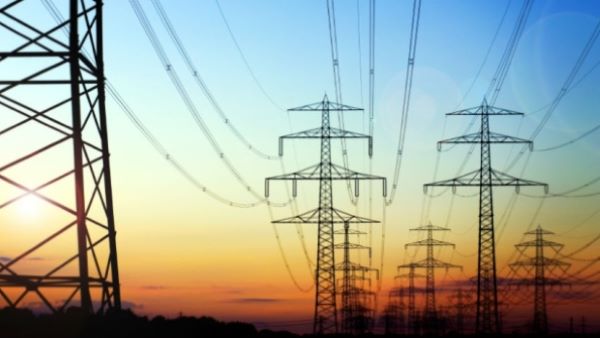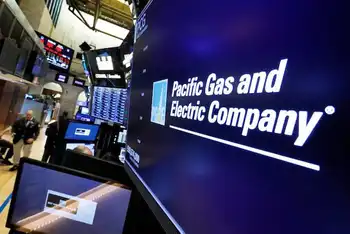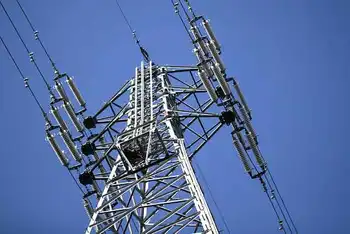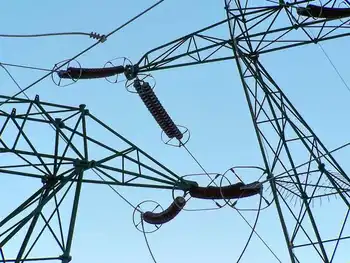Which is more sustainable, paper or digital?
By Printing News
NFPA 70e Training - Arc Flash
Our customized live online or in‑person group training can be delivered to your staff at your location.

- Live Online
- 6 hours Instructor-led
- Group Training Available
The most common answer is that print kills trees and computers don't, so digital media must be greener. The typical indignant response is that print is greener because trees are a renewable resource and computers are toxic energy vampires that don't grow on trees. It's time to stop the bickering. Our future depends on getting this right.
The life cycles of both print and digital media have positive and negative triple bottom line impacts. Both need to become more sustainable, rather than fighting a zero-sum war of words. Humanity's prospects and our better nature will best be served if we strive for the sustainable evolution of both print and digital media, rather than allowing or cheering the demise of one or the other. If you are a printer or supplier of graphic arts you cannot afford to be indignant or complacent about making print significantly more sustainable than it is — and don't try to argue that you can't afford it.
The term sustainability was first used by Lester Brown in the 1981 book, "Building a Sustainable Society," and it is closely related to the widely used term "sustainable development," as defined by the 1987 Bruntland Commission report to the United Nations, Our Common Future. Sustainability is a cross-cutting concept meaning far more than the basic notion of "things persisting or enduring" or being "green."
While sustainability encompasses environmental stewardship, conservation and other "green" factors, it is a broad aspirational concept that seeks to integrate and balance the economic, environmental, and social outcomes of human activity through the use of qualitative action and principles such as The Precautionary Principle, The Natural Step and Appreciative Inquiry, as well as quantitative methods such as Lifecycle Analysis and System Dynamics. It seeks to meet the economic, environmental and social needs of present generations without crossing thresholds that prevent future generations from doing the same.
While environmental issues have typically taken a back seat to financial issues and investment during difficult economic times, this time it's different. Eighty percent of North American corporate sustainability executives recently surveyed by the research firm Panel Intelligence plan to maintain or increase levels of sustainability related spending in 2009. More importantly, R&D and coordination of marketing initiatives for the greening of IT and digital media are growing and outstripping any comparable efforts for print.
Print service providers, technologists, marketers and their associations should take note of efforts such as the Climate Savers Computing Initiative, The Green Grid, and the Global e-Sustainability Initiative (GeSI). An initiative such as the Sustainable Green Printing Partnership is a good start, but more investment and better coordination of efforts with others are needed. Failure to materially address the greening of print supply chains may ultimately seal the fate of print, as well as the fate of the billions whose media-related needs will not be served by a digital monoculture. Addressing sustainability is an issue of growing importance that requires us to rethink our approach.
Have you ever considered what the carbon footprint of your print and digital document workflows are, or what the carbon footprint of a magazine or an iPhone is? (Before you rush to use one of the dozens of carbon calculators available, it's important to realize that the results you get can vary widely as the assumptions used differ, and standards for calculating carbon footprints are still under development.)
The amounts of energy, materials and waste associated with the lifecycles of print and digital media are all too often overlooked, misunderstood or underestimated. There are billions of kilowatt hours of electricity embodied in the paper, ink and digital technologies we use each day, and among our greatest challenges is the need to identify, measure and reduce the amount of energy, waste and greenhouse gas emissions associated with each page or megabyte of information we rely on.
Both print and digital media use prodigious amounts of electricity. According to the Department of Energy, the U.S. papermaking industry used more than 75 billion kilowatt hours of electricity in 2006. That's the fourth largest industrial use of electricity in the country. However, U.S. data centers and servers consumed over 60 billion kilowatt hours of electricity during the same year, and that does not include the energy consumed by client computers or networks. In fact, recent analysis by Gartner Research indicates that datacenter energy consumption is expected to double by 2010, and its growth is unsustainable. This is one of the factors spurring investment in Green IT.
On average, each kilowatt hour of energy represents the emission of approximately two pounds of CO2. To put that in perspective, consider the Empire State Building's 37 million cubic feet of space. The combined emissions of U.S. papermaking, datacenters and client energy demand alone would fill over 100 Empire State Buildings with solidified CO2 (dry ice) each year. Each cubic foot of dry ice weighs approximately 100 pounds.
It is currently difficult to discover carbon footprints. However, according to information recently released by Apple, the lifecycle carbon footprint of an iPhone is responsible for the emission of 121 pounds of CO2-equivalent green house gas emissions over the course of a three-year expected lifetime of use, the same amount produced by 12, 100-watt light bulbs glowing for 691 hours, or a car engine burning 603 gallons of gasoline. Though it is not a direct comparison, it is interesting to note that Discover magazine estimates the lifecycle carbon footprint of each copy of its publication is responsible for 2.1 pounds of carbon dioxide emissions, the same amount produced by 12, 100-watt light bulbs glowing for an hour, or a car engine burning 14 ounces of gasoline.
Over the next few years it can be expected that lifecycle data and the carbon labeling of all products will move from the margins to the mainstream. In part this will be due to the high priority that the current administration in Washington has placed on carbon cap and trade legislation, and regulation of greenhouse gas emissions. In addition, there is already broad support for voluntary initiatives such as the Carbon Disclosure Project and Carbon Trust labeling initiative.
Research has shown that all things being equal, consumers prefer product with smaller carbon footprints. If that's true for other products, why not for print and digital media?
Business, government and day-to-day life depend on both print and digital media to a greater extent than is commonly realized, but neither is without its pluses and minuses. Members of the digital generation might not know enough to care if print goes the way of the slide rule, but they are unlikely to welcome arguments for reinventing print and keeping it in the mix if they are confronted by righteous indignation about the inherent greenness of print as it is today. Better to acknowledge the negative aspects of print then ask critics to consider the metastizing carbon footprint of digital media and encourage them to envision a near term future in which both media supply chains collaborate to become more economically, environmentally and socially sustainable.
Paint a picture of sustainable data centers and green printing facilities. Discuss how both print and digital media could be powered by advanced paper mills called integrated biorefineries that turn agricultural waste, waste paper, dedicated energy crops, algae and sustainably harvested trees into energy, biofuels, biopolymer toner, renewable chemical feedstocks and paper. Not only would this increase U.S. energy security, it would create green collar jobs and address climate change at the same time.
We cannot achieve sustainability by asking consumers to change light bulbs, drive hybrids and recycle alone. And we can't achieve sustainability by decreasing the diversity of media options that serve as our collective memory.
Whether you choose print or digital, anyone who lives in the U.S. contributes more than twice as much greenhouse gas as the global average. Considering that we represent about 5 percent of the world's population, and that billions in the developing world emulate our lifestyle, it becomes even more important to avoid simple answers or ignore inconvenient truths. We have an opportunity and an obligation to reinvent both print and digital media. We must also be realistic about the limited effects of small individual or voluntary actions.
It's time for consumers and producers of media to recognize that we share a common fate that can only be sustainable if we work together to make both print and digital sustainable. Toward that end, the Institute for Sustainable Communication welcomes your support, comments, questions and suggestions for positive steps we can take together.











